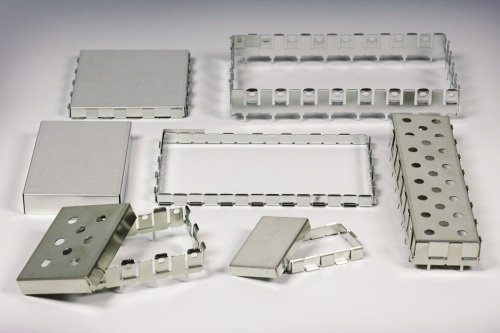
For a long time, printed circuit boards (PCBs) have been the foundation of electrical engineering. Not only do these small components act as the ‘brains’ of a powered device, but they also serve as the backbone that makes the seamless functioning of a device possible. In fact, without the PCB, a powered device will never work. From remote controls and toys to robotics and cell phones, printed circuit boards provide connectivity and electricity between the various parts of a device, thereby allowing it to function as planned. Unfortunately, the use of new materials and the growing frequency of electrical signals and processors within electronic systems has led to the rise of electromagnetic interference (EMI) problems. EMI poses a threat to electronic equipment and solving this issue involves the use of board level shielding design.
Minimizing EMI
EMI is disruptive electromagnetic energy that spreads throughout a circuit via radiated or conducted paths. Not only does this energy affect circuit performance, but depending on the intensity, it can have adverse reactions on a person’s health. While total eradication is difficult, PCB designers are tasked with lowering the emitted radiation to a level that meets mandated industry requirements for health, safety, and operation. Board level shielding can help to achieve this in tablets, cellphones, and other portable products. Proper use of wiring layouts and ground planes that reduce parasitic capacitance and ground loops contribute towards the minimization of EMI.
Increasing the Strength of Board Level Shielding
Once the designers are successful in optimizing the PCB design for minimal emissions, they move onto the next stage – shielding critical parts of the printed circuit board to avoid emissions. They must also limit electrical emissions from other parts of the system from adversely affecting the sensitive circuits. So, just surrounding key circuits with metal shields is not enough; designers must also resort to additional shielding solutions such as gaskets and other materials. Only then do they succeed in shielding the maximum part of the overall enclosure. And it is this shielding which acts as a conductive barrier, enveloping the electrical circuit to keep it isolated and preventing electromagnetic interference from leaking out.
Hypothetically, the ‘perfect’ board level EMI shielding solution is a sealed conductive container that lacks any openings. But shielding designers believe that this is not practical as whatever remains within the container has outputs and inputs, and requires ground connections and power – all of which may leak unless additional measures are adopted.
Making Necessary Enhancements
While board level shielding is often considered a standalone solution, the effectiveness of this process increases considerably when used alongside suppression techniques like filtering, grounding, and minimizing PCB loop area. The truth is, manufacturers often treat shielding as a last resort, and by the time the design is completed, it is impossible to install the shields. However, incorporating shielding solutions right from the start of the design process gives manufacturers the opportunity to deliver a more efficient and cost-effective system design. Factors Influencing PCB Performance
How well a printed circuit board can absorb or block EMI signals depends on various factors including the permeability of the design material, its conductivity, and material thickness. That’s because the capacity of the material to reflect signals is affected by both the conductivity and permeability. An EMI shielding design needs to pay attention to other issues as well including mechanical strength and airflow. For example, lots of shields include apertures in their structures to facilitate airflow and lower the thermal buildup in parts of the circuit that dissipate tremendous amounts of energy. Designers must also exercise caution while selecting the right shielding gasket materials.
All electronic devices need EMI shielding to function at their optimum level. It is up to the designers to figure out the right kind of board level shielding to limit the emitted radiation. The important thing to remember is, the better the shielding, the better is the PCB performance.
Thanks for you kind information. My long time PCB Manufacturer offers shielding too